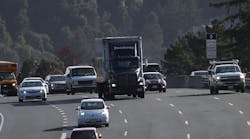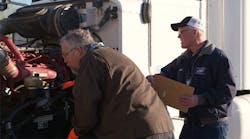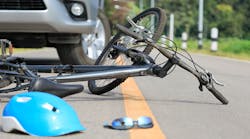On 60 Minutes last Sunday they interviewed Amazon’s Jeff Bezos and he introduced his plans to use drones for delivery between fulfilment centers and customers. This introduces a whole new set of safety issues, and I was wondering if this might be an area of performance standards you might or should be involved in. What about air traffic? Obstacle detection? Do you have concerns about this, knowing what you know about the challenges of AGVS? Is it workable in your opinion?
EXPERT ANSWER:I think you’re right, this could be an area open to performance standards. First, let’s see if it makes any sense. I did a quick ‘back of the envelope calculation’ and (with a lot of assumptions) calculate 6 drones could deliver 700, 5 lbs. or less, packages over a 24-hour period, which averages a referenced UPS equivalence. To me, that’s not too far-fetched. Assuming that octa-copter drones have many fewer obstacles to potentially hit in the sky than an AGV in a facility, that too seems doable.
According to http://www.nokaviation.com/PPL_trg/rules.htm, other air traffic doesn’t seem to be an issue either if delivery drones fly at only a few hundred feet above the ground. They say that small aircraft fly at 500-1000 ft above the ground in various areas. Obstacle detection might consist of buildings, structures, trees, birds, etc. where radar could be used. Similar to AGVs, the copter could stop or slow down when it is near an obstacle and can plan routes around the obstacle. As Mr. Bezos said, GPS provides the navigation waypoints of where to deliver the package but, GPS could also provide building and large permanent structures positions. And there are already indoor GPS measurement systems available. So, moving from indoor to outdoors and back also seems feasible.
We did a similar outdoor project for DARPA called “Learning Applied to Ground Robots” (LAGR) where the ground robot (wheeled vehicle) had to navigate unknown terrain and obstacles to a GPS waypoint three times, learning to travel the best route better each time for faster navigation. The three year project provided lots of navigation improvements and I could envision similar progress for air vehicles that has perhaps already occurred. As I say, there are fewer obstacles in the air at a few hundred feet above the ground. Also note, I’m not an UAV (unmanned air vehicle) expert by any stretch, nor do I know the safety of these devices or FAA rules. However, overall, I do think the concept is feasible for short range package delivery and in 5 years – if only performing delivery to a few locations along the same flight paths. The autonomy obviously needs to be flawless since packages are to be air delivered, perhaps over our heads.
I would think that even with today’s UAV, sensor, and navigation technology, it would be sufficient to make a test facility and begin to do real measurements of performance and capability for delivery drones from a known pickup location inside a warehouse and to deliver to GPS locations. As you probably know, GPS is not entirely flawless and could also be a concern.
Join the ConversationShare your insights and opinions on the questions and the Experts answer(s). You must be logged in to the website in order to post your comments.



